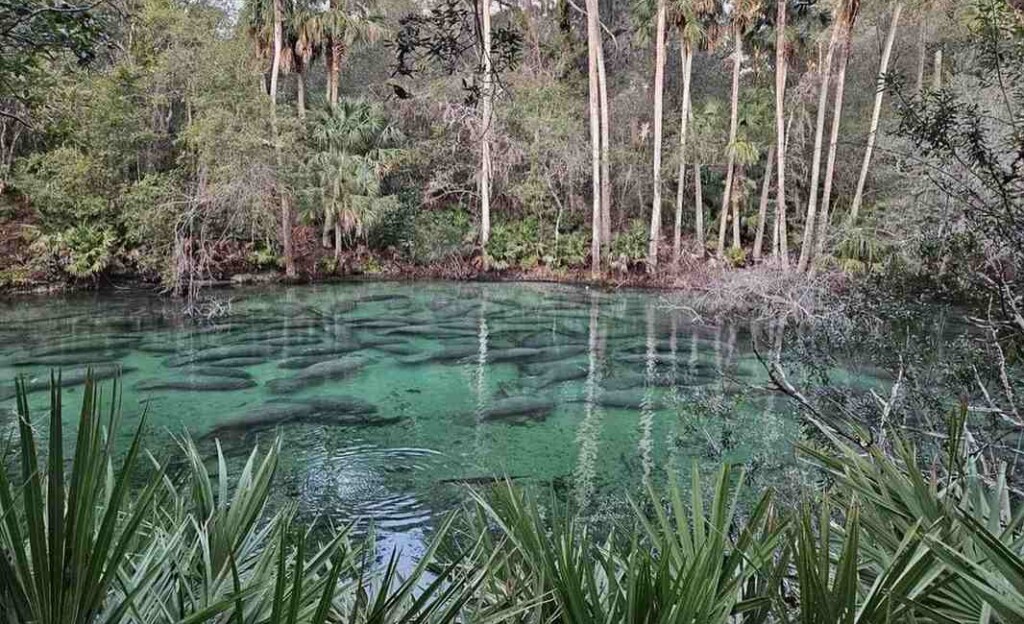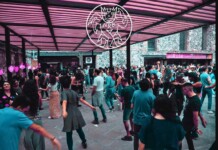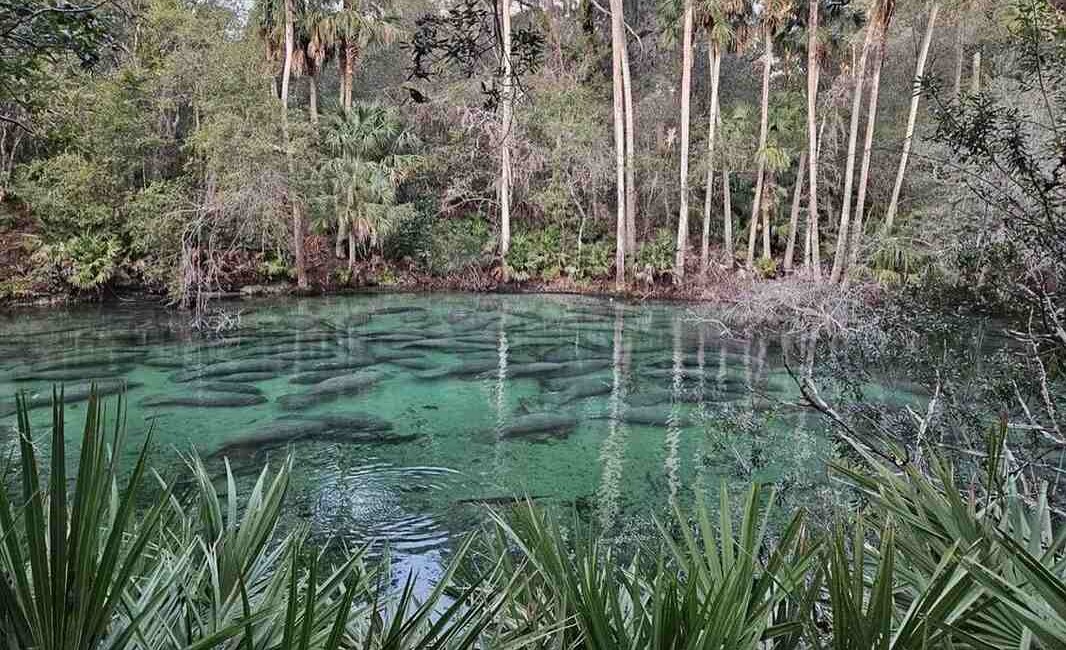
Those are not rocks you see in this beautiful turquoise water. They aren’t fish either; as incredible as it sounds, those are manatees.
At Blue Spring State Park in Florida, rangers and wildlife biologists have been bowled over by the number of manatees coming into the park’s warm and shallow lagoons to wait out the winter.
The park has been a refuge for the animals against sudden cold snaps for decades, and it’s tradition for rangers to take a “manatee count” every winter. This year the numbers were higher than ever before, with no morning being more memorable than January 21.
On that day, 932 manatees were found throughout the lagoons, 200 more than the highest previously recorded “aggregation,” which is the term for a group of manatees.
Despite their large rotund bodies reminiscent of seals and walruses, manatees have just 1 inch of fat, and can’t survive in water that’s colder than 68°F indefinitely, according to Smithsonian’s Christian Thorsberg.
When winter weather drops water temps, these animals, called “sea cows” because of their gentle, ho-hum grazing demeanor, seek out warm waters further inland.
MORE AMAZING ANIMALS: Drone Captures Mesmerizing School of Rays that Appear Like Confetti in the Water
The fact that so many were able to come to Blue Springs “is really encouraging” says Cora Berchem, a manatee research associate at the nonprofit Save the Manatee Club. Talking with NPR, Berchem explained that it means they have a good intergenerational understanding of their environment, increasing the odds of intergenerational survival from similar weather events.
Between 7,000 and 11,000 manatees live across Florida—a significant increase from 50 years ago, when they numbered only 1,000.
SHARE This Incredible Opportunity To See Manatees En Masse…




















